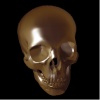The D3D9 vs D3D10/11 and D3D10 vs D3D11 is not exactly the same.
Supporting multiple DX versions means we need to aim for lowest common denominator. This cripples performance optimizations that are not possible because of the oldest path (unless we'd spent an disproportionate amount of resources to maintain two completely different code paths).
This means a game well-designed to run D3D11 will be significantly more efficient than a game that aims to run on D3D11, 10 & 9.
The D3D9 to D3D10 shift was a very peculiar one. It wasn't just performance, D3D10 introduced a few improvements that were very handy and easy to support for adding "extras" (note: these extras could've been easily backported to D3D9, but MS just wasn't interested).
For example: Z Buffer access, Z Out semantic, sending to multiple RTTs via the geometry shader, access to individual MSAA samples, separate alpha blending, dynamic indexing in the pixel shader, real dynamic branching in the pixel shader.
All stuff that made certain postprocessing FXs much easier. Therefore it was possible to offer DX10-only effects like you see in Bioshock that can be turned on and off, just to "spice up" the experience when you had a recent GPU running on Vista.
But moving from D3D10->D3D11... there weren't many features introduces, but those few features... oh boy they were critical. Let's take Assassin's Creed Unity for example: its frustum culling and dispatch of draws lives in a compute shader! We're not talking about an effect you can turn on and off. We're talking about the bare bones of its rendering infrastructure depending on a feature unavailable to D3D10 cards. Supporting D3D10 cards may mean as well to rewrite 70% or more of its entire rendering engine; which also likely will affect the asset pipeline and the map layout.
There are only a few D3D11-only things that can be used to spice up the graphics while still turning them off for D3D10, tessellation comes to mind.





